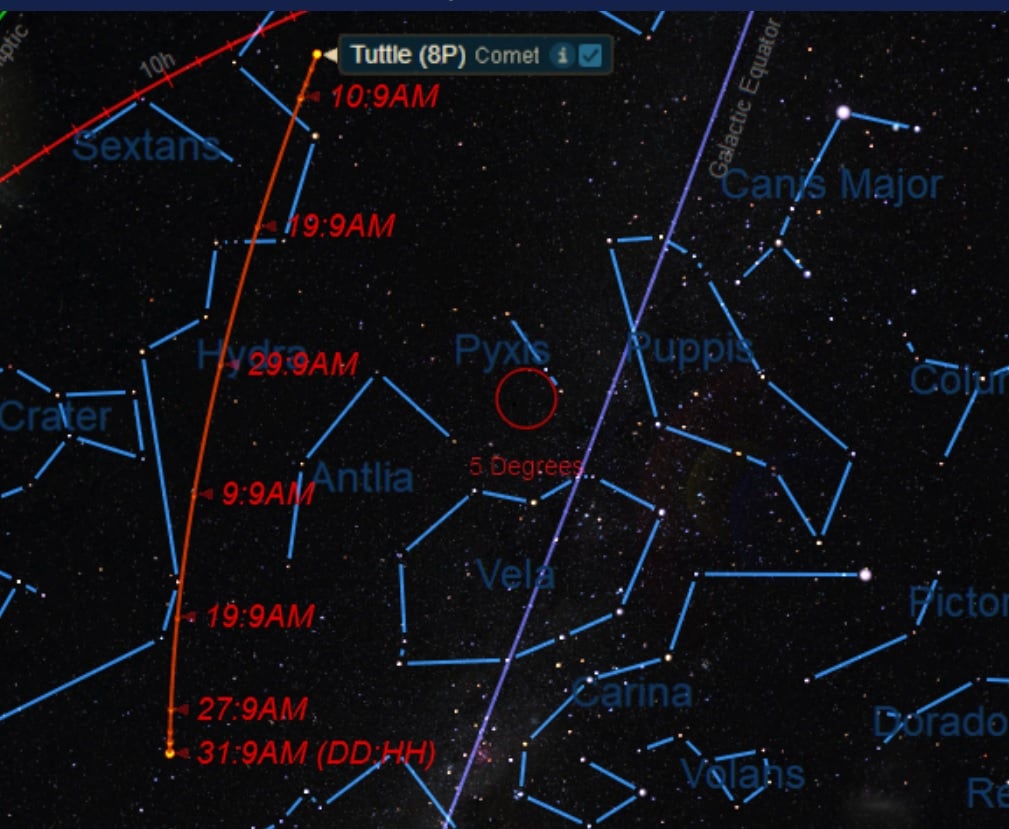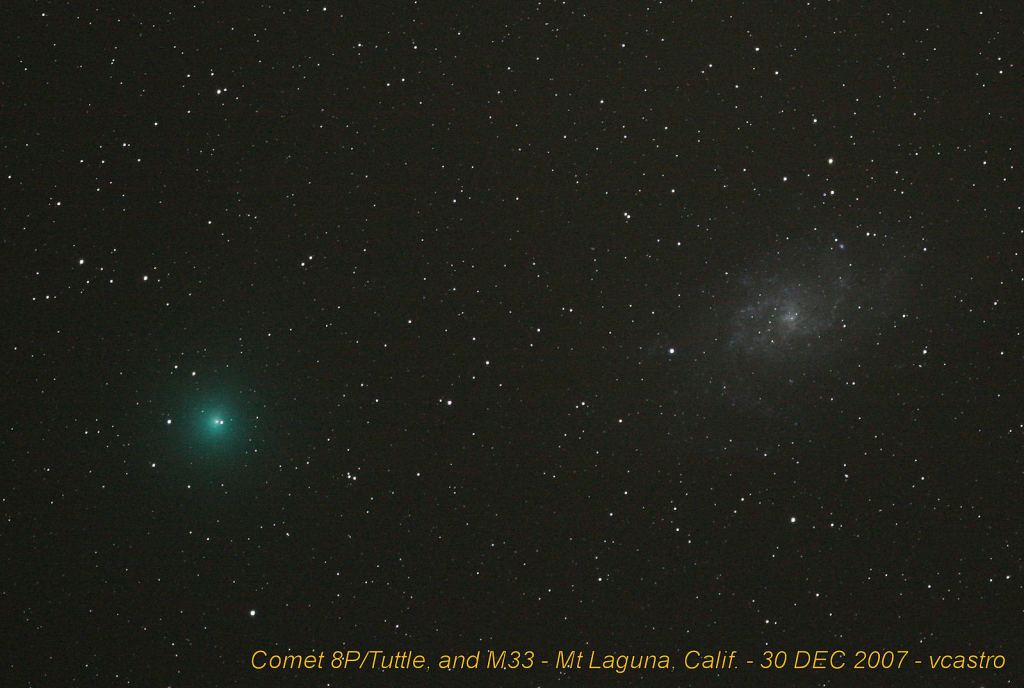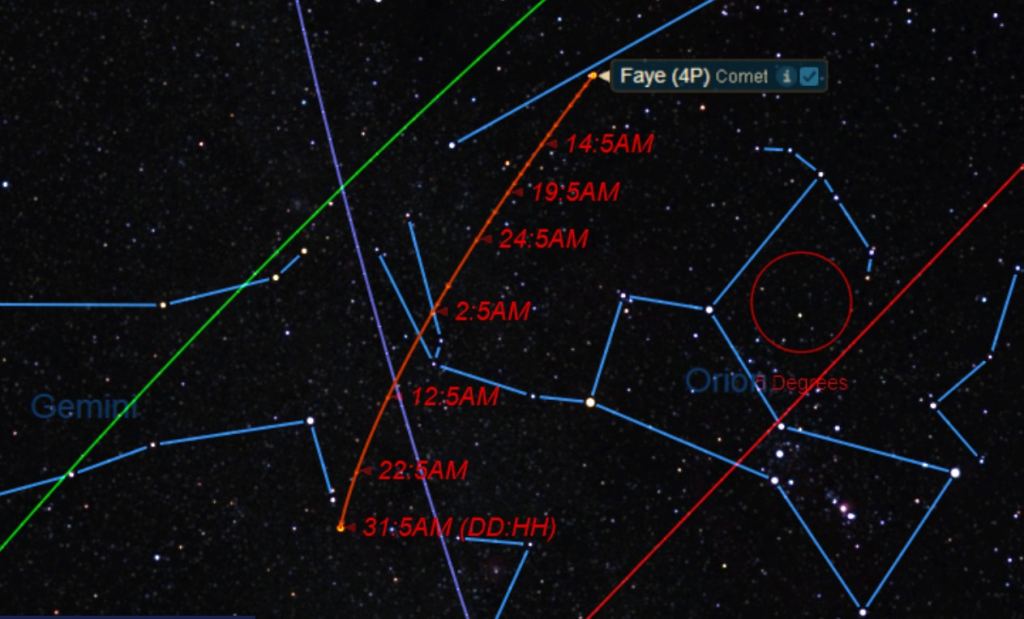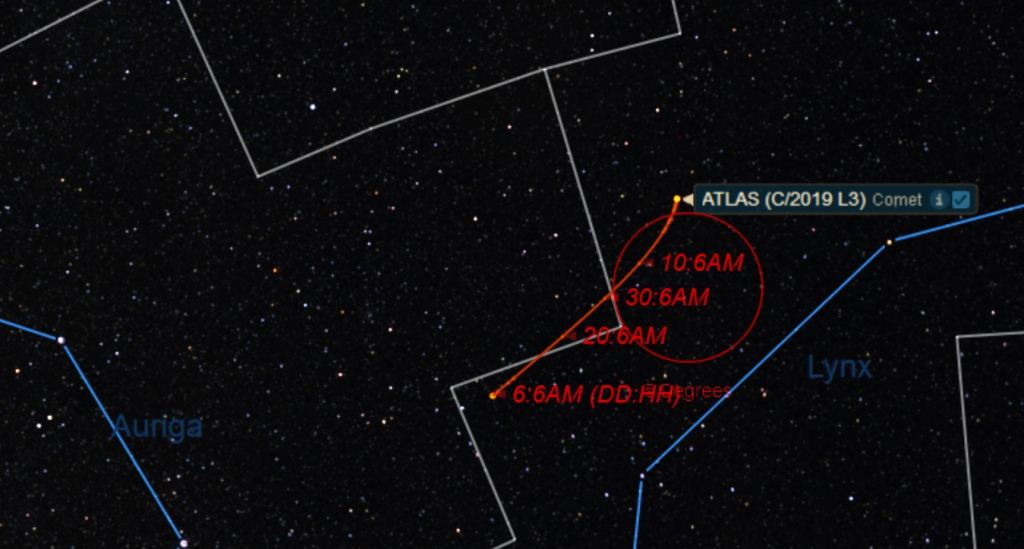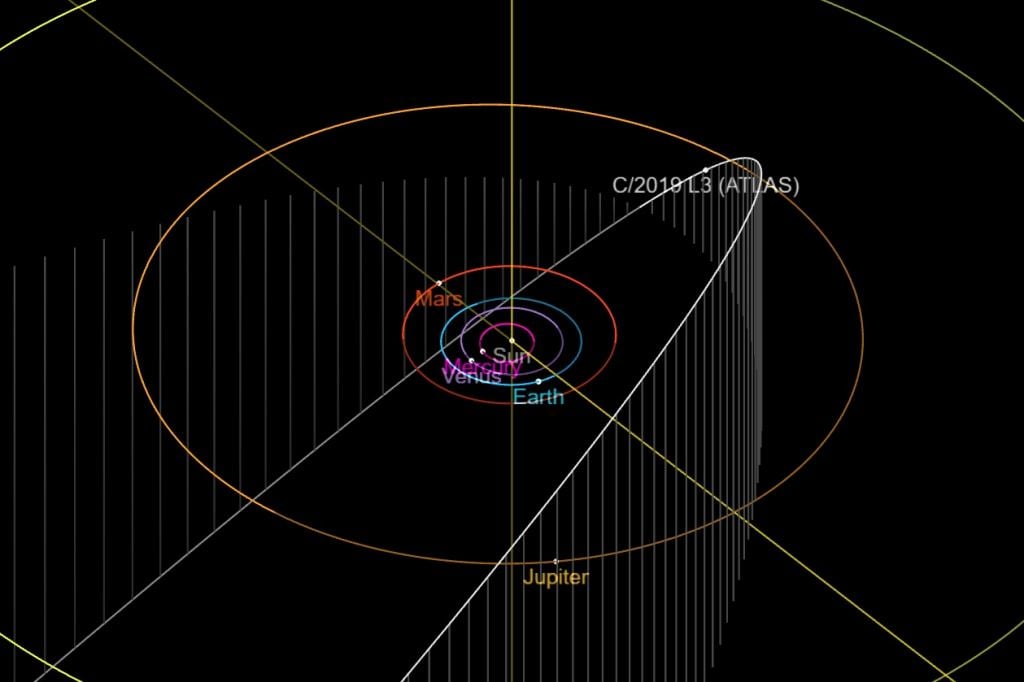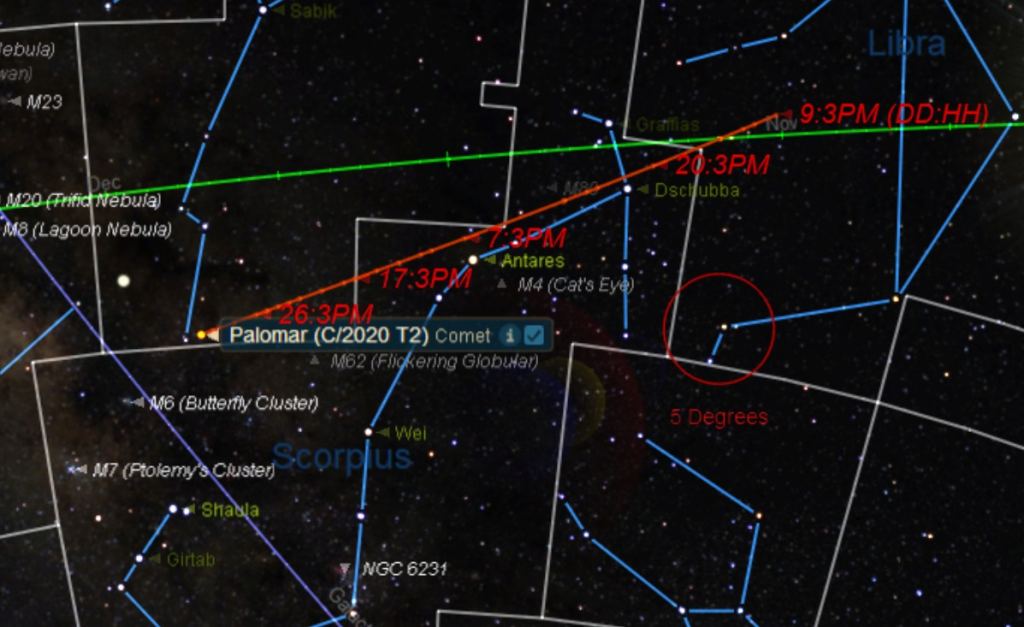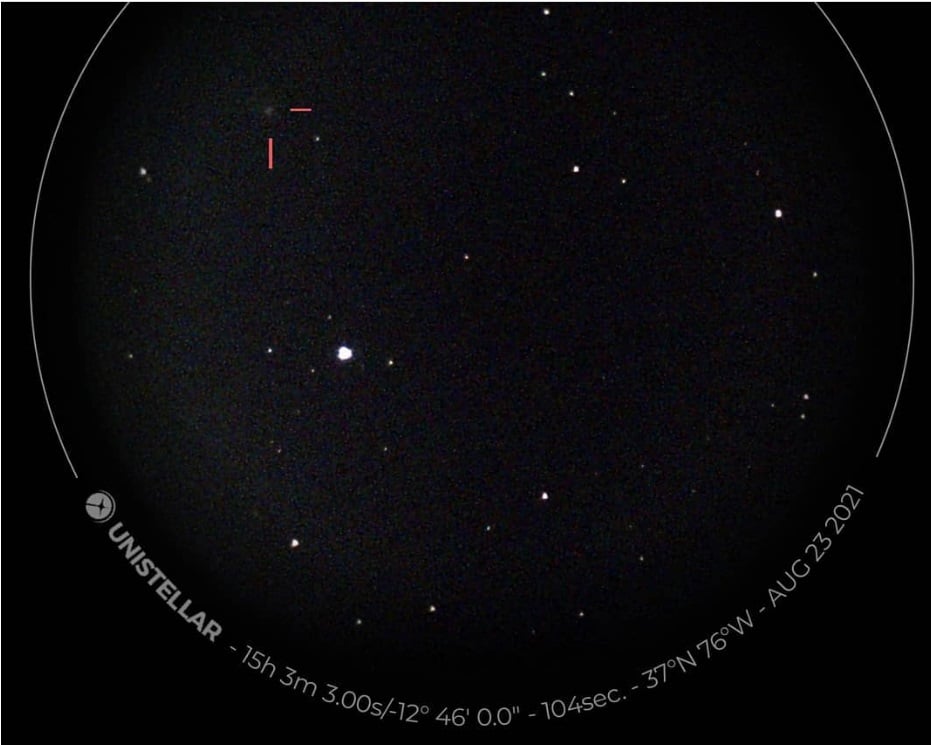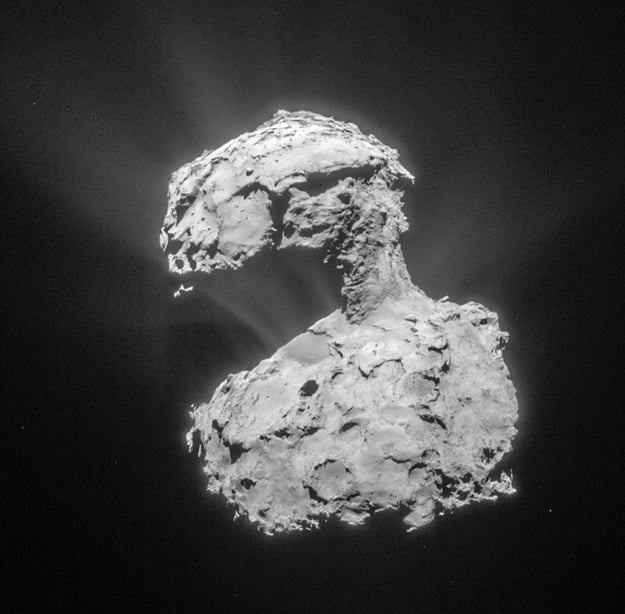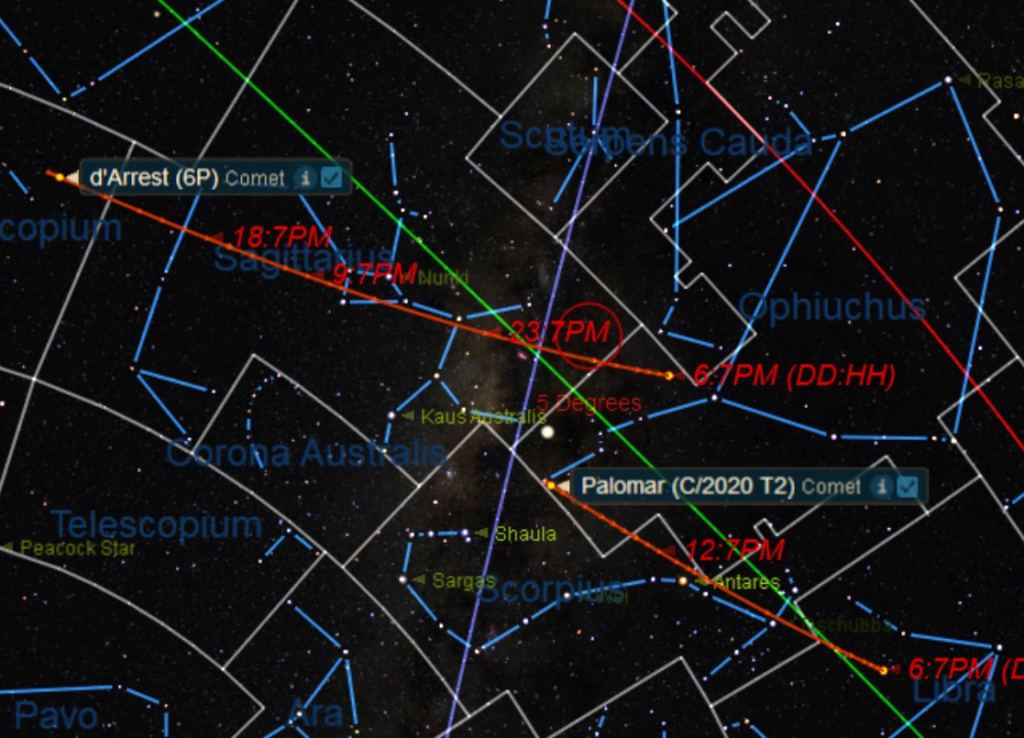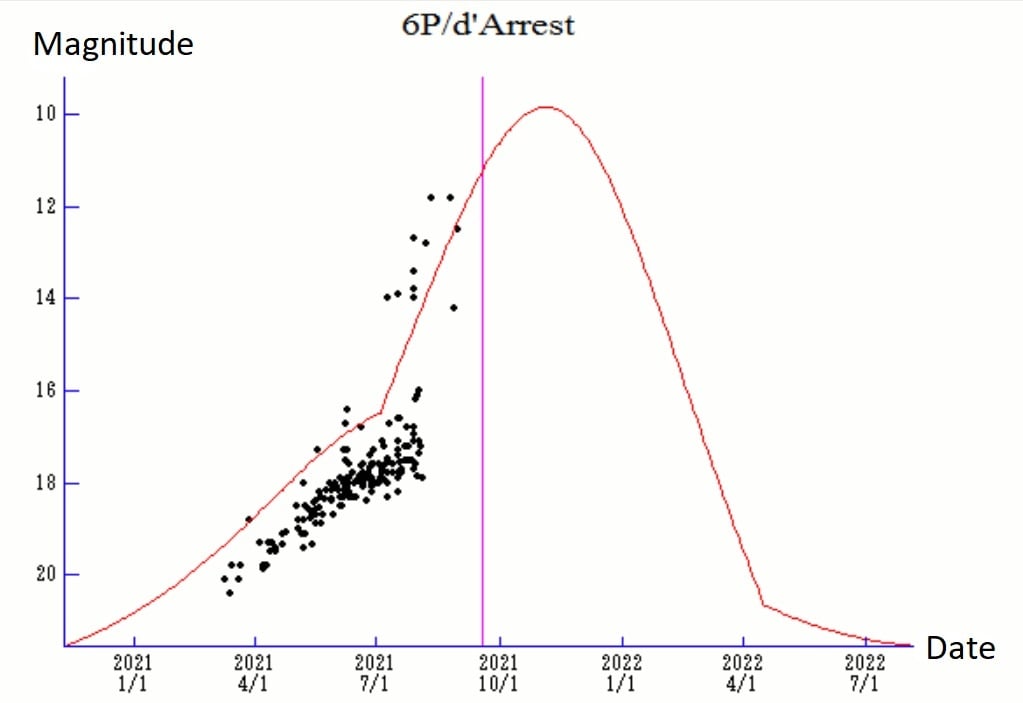Fall 2021 offers up an all-night parade of challenging telescopic comets.
Ready for the next big one? If you're like us, the surprise appearance of Comet F3 NEOWISE last summer was a great teaser of what could be. To be sure, we're still long overdue for the next great naked eye comet, but there's always a steady stream of fainter fuzzies out there for owners of large light buckets to hunt down. Fall of 2021 sees half a dozen comets knocking on binocular visibility around +10thmagnitude, from dusk 'til dawn. So without further fanfare, here are the best cometary targets for September into October 2021:
-8P/Tuttle
Orbital period: 13.6 years.
Perihelion: August 27th, 2021.
Fun fact: 8P Tuttle is the cometary source of the December Ursid meteor shower.
2021 Visibility prospects: The comet tops out +8thmag in September, but sits low to the east at dawn for northern hemisphere. The southern hemisphere gets a better view in October, as the comet plunges through the long snaking constellation of Hydra.
Key date: On September 12 ththe comet passes two degrees from the +2 magnitude star Alphard (Alpha Hydrae).
-4P/Faye
Orbital period: 7.6 years.
Perihelion: September 8 th, 2021
Fun Fact: Note its low discovery number: 4P Faye was only the 4thperiodic comet discovered, after 1P Halley, 2P Encke and 'lost' comet 3D Biela.
2021 visibility prospects: Fresh off perihelion this week, 4P/Faye maintains good visibility for northern hemisphere observers high in the dawn in September-October, crossing Taurus into Orion and Gemini and shining at +11thto +10thmagnitude.
Key Date: On October 27 th, the comet passes just 40' from the +3.3 magnitude star Alzirr (Xi Geminorum).
-C/2019 L3 ATLAS
Orbital period: Unknown (perhaps thousands or millions of years).
Perihelion: January 8th, 2022.
Fun Fact: With an eccentricity of just a shade over 1.0, L3 ATLAS, like many extreme long-period comets, may be an interstellar object.
2021 visibility prospects: L3 ATLAS rides high in the Lynx/Auriga in the pre-dawn sky in September through October, flirting with +10thmagnitude visibility.
Key Date: Crossing a relatively vacant patch of sky, comet L3 ATLAS starts the week off of September 6 thjust one degree from +5thmagnitude star 16 Lyncis.
-C/2020 T2 Palomar
Orbital Period: 5,550 years.
Perihelion: July 11th, 2021.
Fun Fact: Discovered by the Palomar/Zwicky Transit Facility survey on the night of October 7 th, 2020, comet T2 Palomar won't return to the inner solar system for over another five millennia.
2021 visibility prospects: T2 Palomar topped out at +9thmagnitude in August, and is now rapidly fading low in the dusk sky.
Key Date: On October 7 th, comet T2 Palomar will pass just one degree from +1stmagnitude star Antares.
67P Churyumov-Gerasimenko
Orbital period: 6.45 years.
Perihelion: November 2nd2021.
Fun Fact: One of the most explored of all comets, ESA's Rosetta mission visited comet 67P from 2014 to 2016.
2021 visibility prospects: Headed towards +9thmagnitude as it nears perihelion in November, Comet 67P is a good late night comet, crossing from Aries through Taurus and Gemini in September-October.
Key Dates: Spanning the ecliptic plane, the comet visits some key celestial guideposts: On September 23rd: the comet nicks the Hyades very near the bright star Epsilon Tauri; on October 8 th, it passes very near the Crab Nebula (Messier 1) then on October 15 thit passes very near the open cluster Messier 35.
-6P d’Arrest
Orbital period: 6.5 years.
Perihelion: September 17 th, 2021.
Fun Fact: 6P d’Arrest was one of the possible targets for NASA's canceled CONTOUR (Comet Nucleus Tour) mission.
2021 visibility prospects: Comet 6P jumped up a full five magnitudes (100-fold) in brightness this summer, suggesting we might be in for a decent apparition in September through October, topping out at +9thmagnitude. The comet crosses Sagittarius this Fall at dusk.
Key Date: Crossing the star-rich realm of Sagittarius very near the galactic core, 6P visits some interesting targets in the Fall of 2021, and actually transits the Trifid Nebula M20 on September 18 thand M55 globular cluster on October 15 th.
Sorry: no comet(s) of the century on this list… yet. Remember, though, the next 'big one' could sweep though the inner solar system at any time. Remember waaaaay back in 1996, when we were all awaiting the apparition of Hale-Bopp… and then there were two, as brilliant comet Hyakutake swept in on the celestial scene, taking us all by surprise. Looking further ahead, we do have comet C/2021 A1 Leonard expected to hit +4thmagnitude late this year, and distant Comet C/2017 K2 PanSTARRS expected to top out at +5thmagnitude or so in late 2022.
In a clockwork predictable universe, comets sometimes seem inscrutable, with minds of their own. More to come!
*Lead image: Comet T2 Palomar passes near the globular cluster Messier 3 earlier this year on May 15th. Image credit and copyright: SteedJoy*
 Universe Today
Universe Today

